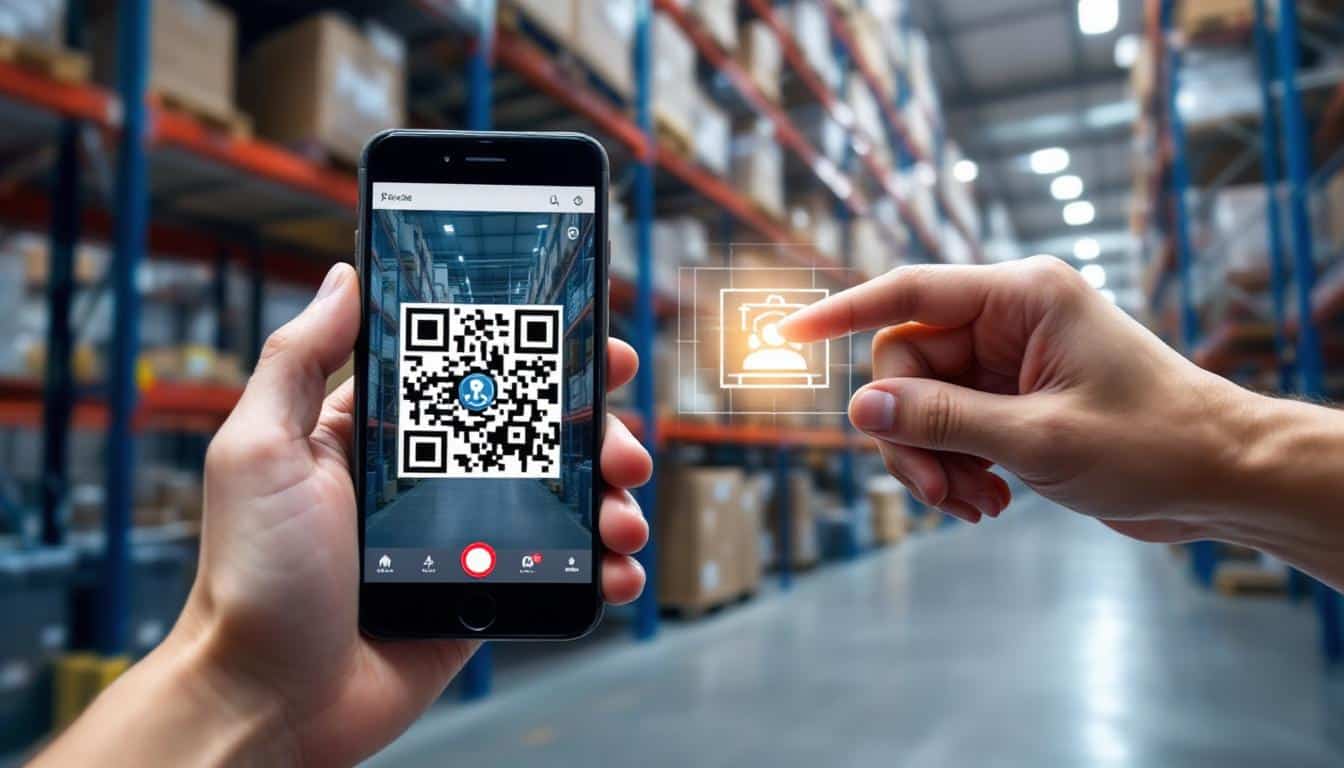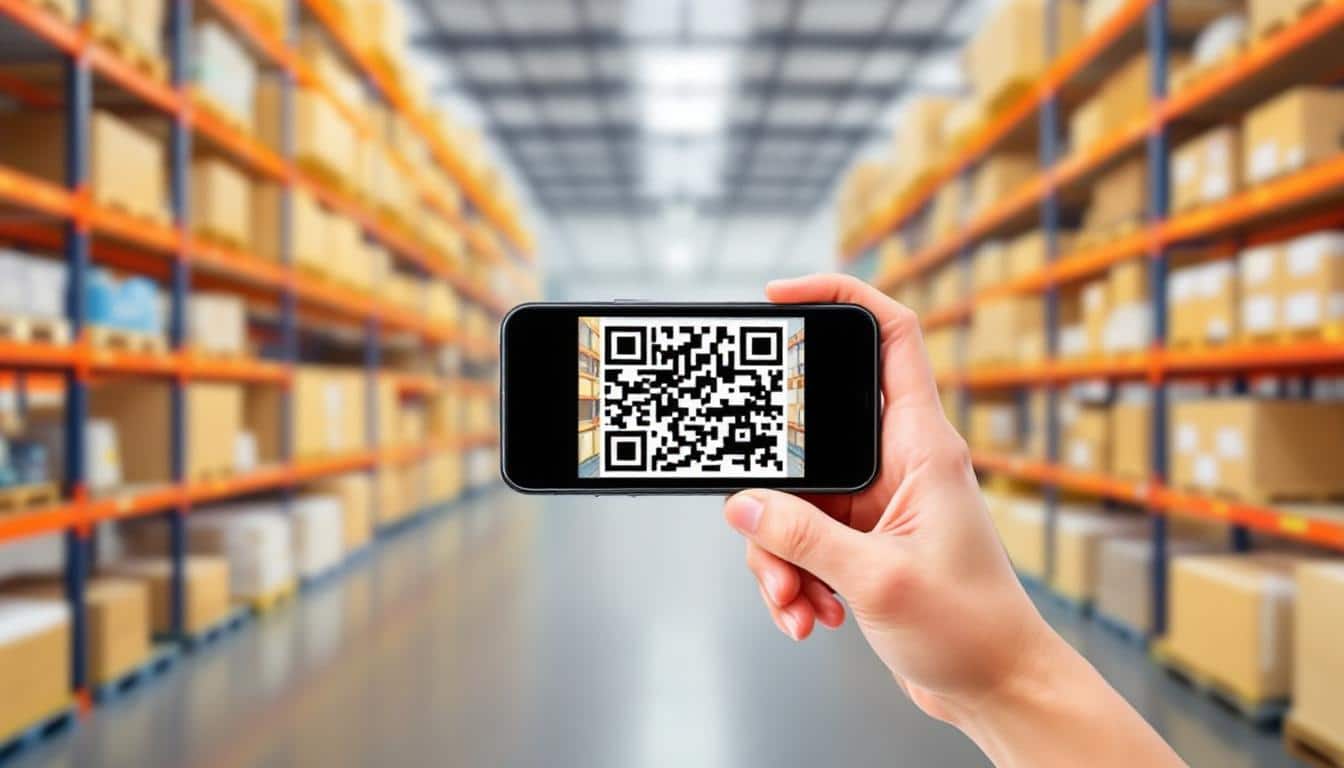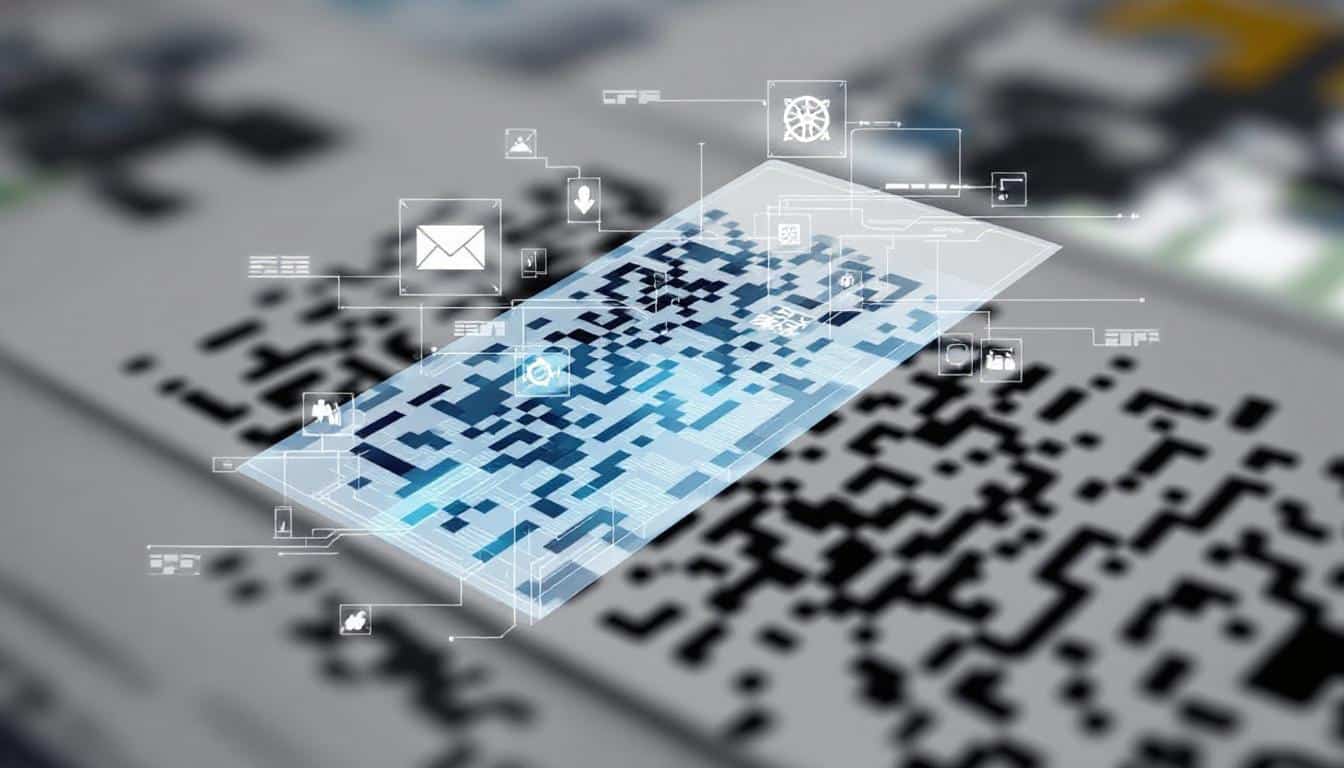Imagine trying to manage a warehouse without a system that’s quick on its feet. Pretty chaotic, right? Enter Barcode/QR code scanning—your warehouse’s best friend. It’s not just about reducing errors or cutting time spent hunting down products, although those are great perks. It keeps the whole operation tight and responsive. Inventory gets aligned perfectly, orders move out faster, and employees aren’t losing hours fixing avoidable mistakes. It’s essential in keeping supply chains flowing smoothly, and it puts chaos to rest. Stick around to find out why this technology is a game-changer.
Understanding Barcode and QR Code Technologies

In today’s fast-moving warehouse management systems (WMS), efficiency is the name of the game, and Barcode/QR code scanning stands at the heart of it. To truly appreciate why this tech is vital, let’s break down what barcodes and QR codes are, and how they work their magic.
Definition of Barcodes
Barcodes are the black-and-white patterns typically seen on product packaging. They bridge the gap between manual inventory checks and lightning-fast electronic data collection. Here are a couple of things to note about these intricate lines:
- Types of Barcodes:
- Linear Barcodes: The classic style with a series of parallel lines, e.g., UPC (Universal Product Code) and EAN (European Article Number). They’re often used in retail for product identification.
- 2D Barcodes: Like Data Matrix and PDF417, which can store more data as they encode information vertically and horizontally.
- Common Uses: Beyond supermarket aisles, barcodes thrive in manufacturing, healthcare, and shipping, streamlining operations by enabling swift tracking and managing stock levels.
Definition of QR Codes
QR codes, the modern cousin of barcodes, are those pixelated squares we often scan with our smartphones. These nifty symbols leap out in functional capability compared to their older relatives. Here’s what sets them apart:
- Structure: Look at a QR code, and you see a matrix of mini black squares within a square grid on a white background. These spots might seem random, but they hold all the encoded information, capable of handling over 4,000 characters.
- Differences from Traditional Barcodes: While traditional barcodes carry data in a single row, QR codes take it further. They feature a two-dimensional structure that stores significantly more information—think URLs, text, contact info, and more. No need for a specialized reader; a smartphone camera suffices.
How Barcode/QR Code Scanning Works
Ever wondered what happens when you scan one of these codes? Let’s break it down:
- Physical Scan: When a barcode reader (or camera in the case of QR codes) captures an image, it’s not the picture that counts—it’s the data it extracts.
- Decoding: The scanner reads the pattern of spaces and lines for traditional barcodes, or pixel layouts for QR codes. Built-in software decodes this pattern into meaningful data like a product number, website, or description.
- Output: The decoded data zips its way to a centralized database where it’s used to update inventory records, verify shipments, or direct you to a website.
In essence, barcodes and QR codes play a starring role in WMS by boosting speed, slashing errors, and effortlessly handling all-important inventory data. They are the unseen workforce powering warehouses behind the scenes.
The Role of Barcode/QR Code Scanning in WMS
Barcode and QR code scanning isn’t simply a small cog in the wheel of warehouse management systems (WMS); it’s a driving force that transforms how warehouses operate. Whether it’s about speeding up processes or smashing down error rates, this technology offers a robust foundation for efficiency and accuracy. Let’s dive into how this smart tech reshapes inventory management, order fulfillment, and human error reduction.
Streamlining Inventory Management
Scouring shelves for products like a treasure hunt is not the smartest use of anyone’s time. Enter barcode and QR code scanning—a tool that brings precision to inventory management.
- Real-Time Updates: Say goodbye to manual data entry and hello to real-time inventory updates. When each item is scanned, its data quickly reaches the central database. This functionality helps in preventing overstocking or running out of crucial items.
- Tracking Made Easy: Inventory scanning offers a clear, error-free view of what’s available and what’s reserved. Imagine relying on sticky notes versus having a reliable digital checklist; it’s clear which one’s the game-winner.
- Efficient Stock Auditing: Auditors can scan items instead of manually counting them. Not only does this minimize time wastage, it also escalates efficiency, thereby making inventory reconciliation significantly stress-free.
Enhancing Order Fulfillment Processes
You know that rush of adrenaline when a big order comes in? With barcode and QR code tech, that excitement doesn’t slow down as things get processed smoothly and quickly.
- Speed and Accuracy: Order pickers can scan the codes to verify product details, ensuring they grab the right items every time. It’s sort of like having a personal GPS in a maze; you’re guided step-by-step, preventing wrong turns.
- Streamlined Packing: Scanning codes also enhances packing processes. The system confirms items before shipping them out, minimizing billing disputes and customer dissatisfaction due to wrong shipments.
- Boosting Throughput: With picking and packing becoming less cumbersome and exceedingly faster, you’ve got more completed orders zipping their way out of the warehouse earlier than expected.
Reducing Human Errors
Even the best of us make mistakes, but when it comes to data entry and inventory counts, errors can cost dearly. Fortunately, scanning technology drastically cuts down on these human miscues.
- Accurate Data Entry: Typically, typing errors propagate like an unwelcome virus. Scanning neatly sidesteps this issue by transferring exact data directly, without manually keying anything in.
- Error-Reduced Inventories: Miscounts become a tale of the past as scanning verifies each item. It’s akin to the reliability of a spell checker for language but for inventory numbers.
- Fewer Mis-picks: With validated scans, mis-picks reduce dramatically as items get checked by the system against orders, keeping costly mistakes at bay.
In essence, barcode and QR code scanning aren’t just cool tech, they are the lynchpins holding the entire WMS together smoothly. Decode the chaos and witness a shift toward precision, speed, and sweeping efficiency with every scan.
Benefits of Implementing Barcode/QR Code Scanning in WMS
Imagine what it’s like when you have all crucial warehouse information at your fingertips, exactly when you need it. Barcode/QR code scanning makes this happen for Warehouse Management Systems (WMS). This section covers why employing these technologies not only boosts operational precision but also slashes costs and inefficiencies.
Improved Efficiency and Productivity
Think of your WMS like a car engine, where barcode and QR code scanning are the lubricants that smooth operations. This technology cuts out unnecessary tasks, allowing your team to zoom through their duties with greater speed and precision. Here’s how:
- Speedier Processes: Manual data entry is lengthy and error-prone. By implementing scanning, tasks like inventory checks and order picking are accomplished much faster, reducing transition times significantly.
- Reduced Bottlenecks: Like all good production lines, your warehouse needs effective flow. Scanners help avoid snags by providing immediate status updates. When each item’s location and status update automatically, your team can focus less on searching and more on moving.
- Enhanced Accuracy: Say goodbye to the “human mistake factor.” Scanning inputs data directly into your system, eliminating man-made errors that pencil and paper can’t hide.
Real-Time Data Access and Analytics
Fly-by-night decision-making isn’t great for business. Having real-time data through your WMS ensures accuracy and helps develop next steps quickly—whether it’s filling an urgent order or replenishing stock shortages.
- Instant Inventory Updates: With barcode and QR code scanning, inventory details are updated as soon as an item is scanned. This means no lag in your database’s reflection of real-time supply levels.
- Informed Decision-Making: Pinpoint areas requiring adjustment sooner rather than later. Imagine driving a car with a constantly updated dashboard versus just checking it occasionally—a similar importance applies in your warehouse.
- Predictive Insights: Analysis of consistent, real-time data can open up insights about inventory patterns and performance metrics. This empowers you to predict future trends rather than merely react to past events.
Cost Savings and ROI
Lean operations mean more pennies saved—not just temporarily, but for the long haul. Barcode and QR code scanning helps chip away at costly inefficiencies.
- Decrease in Labor Costs: Less time spent correcting errors means fewer dollars wasted. It also leads to needing fewer employees for tedious tasks.
- Lower Operational Costs: Misplaced items, wrong picks, and manual corrections lead to expensive blunders. By scanning, these issues dwindle, helping your budget breathe a little easier.
- Faster Return on Investment (ROI): Implementing these technologies might seem costly initially but pays off quickly as savings mount from more accurate operations. It’s like installing solar panels—initial cost is balanced by long-term savings and gains.
Barcode/QR code scanning isn’t merely a technological bonus—it’s a pillar supporting the structure of your warehouse management system. From nudging employees towards more streamlined workflows to keeping your expenses optimized, it catalyzes change that transcends conventional methods.
Challenges and Considerations
Implementing barcode and QR code scanning in Warehouse Management Systems (WMS) is a giant step forward, but it comes with its hurdles. Recognizing these challenges helps you prepare, ensuring a smooth adoption process. Two primary considerations often emerge: integration hurdles and making sure your team adapts to using new tools.
Integration with Existing Systems
Imagine trying to fit a brand-new engine in a vintage car. The process might not be straightforward—similarly, integrating modern barcode and QR code technology with older systems can demand careful tuning.
- Compatibility Issues: Older software might not play nice with scanning tech. Expect to spend time aligning formats, databases, and communication protocols. If systems aren’t compatible, data accuracy and efficiency could hit a snag.
- Data Migration: Transferring old data to new systems isn’t always seamless. You must prepare your team for potential hurdles during the shift. Selecting a migration strategy that best suits your warehouse operations minimizes disruption.
- Cost Considerations: Retrofitting existing systems might incur unexpected costs. The budget should account for both initial updates and long-term support costs. Missing this planning stage can lead to shortfalls and delays.
Training and Employee Adaptation
Think of the whiplash when learning to drive a new car—it takes some getting used to. Transitioning to new technology in your warehouse requires preparing your teams to optimize the use of barcode and QR code scanning tools.
- Effective Training Programs: It’s mission-critical that employees learn to use new systems confidently. Offering hands-on training, preferably tailored to varied team roles, unlocks the tech’s full potential.
- Support Systems: Having reliable technical support smooths out the rough edges during early adoption. Your team should know where to find help when tech gremlins pop up. This means setting up a responsive support structure that feels like training wheels during initial deployment.
- Adjusting to Change: Guide your team through the stages of learning and acceptance. Regular feedback helps ensure employees feel heard and involved in refining the process. This interactive approach transforms apprehension into empowerment, promoting a culture open to technological evolution.
To get the best out of barcode and QR code scanning in WMS, addressing these integration and adaptation hurdles is crucial. The right preparation enables a seamless rollout and full utilization, empowering your warehouse to thrive.
Future Trends in Barcode/QR Code Scanning
As technology continues its relentless march forward, barcode and QR code scanning isn’t sitting idle. It’s evolving to meet modern demands and reshape how warehouses operate. With advancements in mobile scanning solutions and the integration of AI and machine learning, the future of scanning tech is both promising and exciting.
Mobile Scanning Solutions
Who doesn’t love the convenience of whipping out a smartphone to get things done? Mobile scanning solutions are on the rise, making warehouse management just as intuitive and accessible as everyday smartphone use.
- Accessibility and Flexibility: With mobile scanning apps, employees aren’t tethered to bulky traditional scanners. A smartphone or tablet can perform instant scans, offering flexibility few could have imagined a decade ago.
- Cost-Effectiveness: Implementing smartphones can slash costs significantly as they double up as scanners. Warehouses no longer face giant expenses to procure and maintain specialized hardware.
- User-Friendly Interfaces: Mobile apps provide an intuitive user interface that’s familiar to many, reducing training time. Think about how anyone can snap a picture on their phone; scanning products becomes just as straightforward.
- Improved Data Accuracy: Enhanced camera technology boosts precision in QR code capturing, ensuring information is collected swiftly and error-free. This level of accuracy streamlines warehouse processes, cutting down on costly mistakes.
Integration of AI and Machine Learning
Warehouses are leaping into a future where AI and machine learning extend beyond predictive analytics or online recommendations. They’re pushing the boundaries of what barcode and QR code scanning can do.
- Enhanced Data Processing: AI helps interpret scanned data faster by providing intelligent data parsing, detecting anomalies right when they occur. Just imagine AI as a detective that never calls it a day—always ready to spot inconsistencies.
- Automation in Supply Chains: Machine learning algorithms can anticipate demand, optimize stock levels, and direct scanning systems to prioritize specific products during scans—it’s like giving your warehouse a crystal ball to foresee potential dips or spikes in product need.
- Predictive Maintenance: AI forecasts when equipment needs servicing, preventing breakdowns before they occur. Scanners stay operational without the dreaded downtime that can choke significantly smooth-running warehouse operations.
- Smart Learning and Adaptation: Through machine learning, scanning systems nip inefficiencies in the bud. Adaptive algorithms learn from every scan, continuously optimizing workflows and keeping operations slick and nimble.
These advancements paint a picture of streamlined processes with accurate, efficient tools turning potential challenges into triumphs. In other words, barcode and QR code scanning technology isn’t just catching up to present needs—it’s racing ahead to define the future.
Conclusion
Barcode and QR code scanning rewrites the playbook for warehouse management systems. These tech tools squeeze out inefficiencies and deliver real-time data updates, shaping warehouses into agile powerhouses. With scanning, warehouses boost accuracy and curb costs, setting the stage for rapid ROI.
Getting started is key. Businesses eyeing progress should embrace scanning tech now, making operations more fluid and less error-prone. Ask yourself: Are you ready to shape the future of your warehouse?
Explore these scanning technologies today to unlock unmatched operational efficiency. Decisions look different when grounded in precise, up-to-the-minute data. And your warehouse? It’s waiting to shine with each scan.


